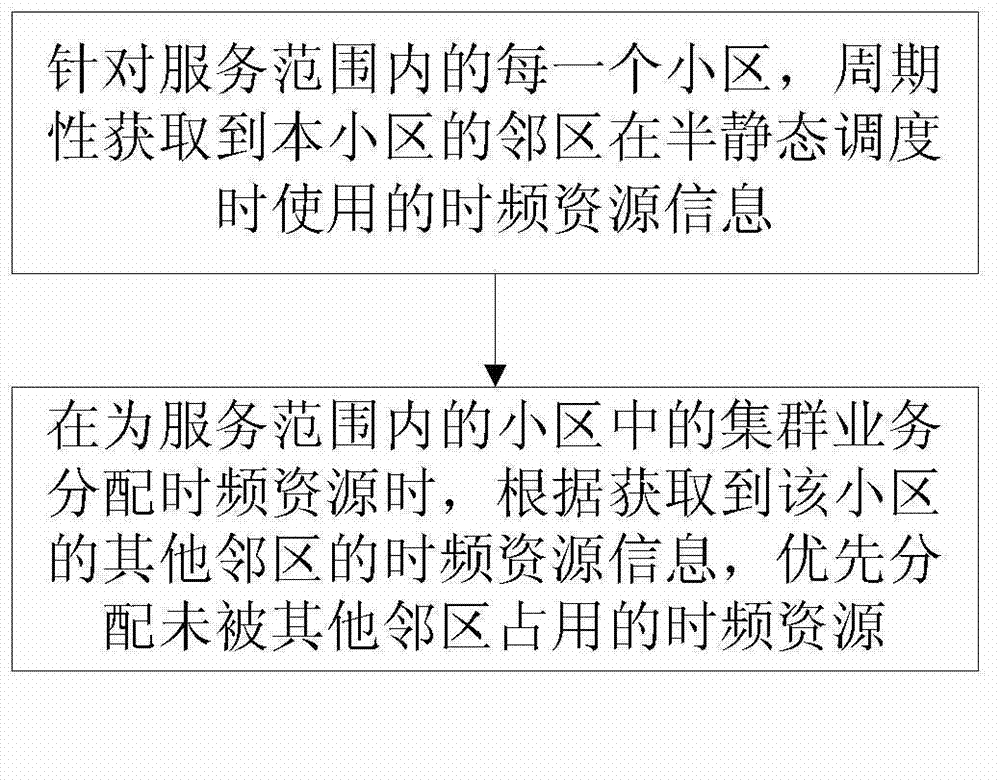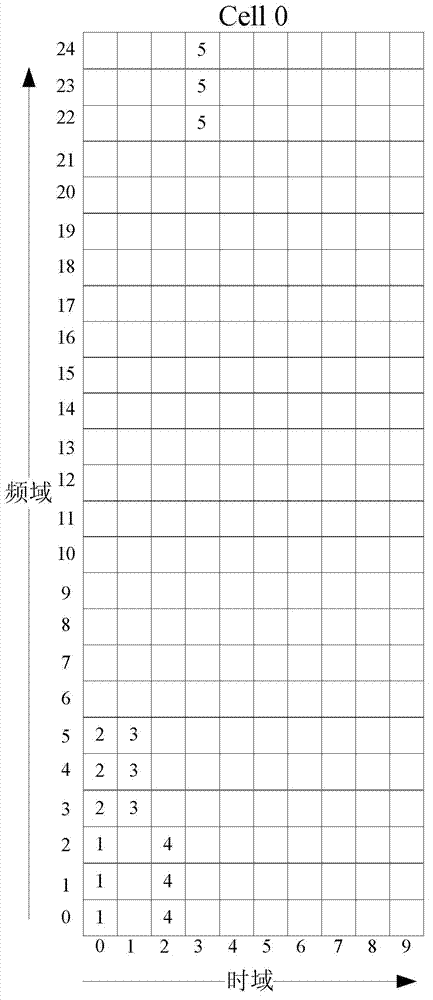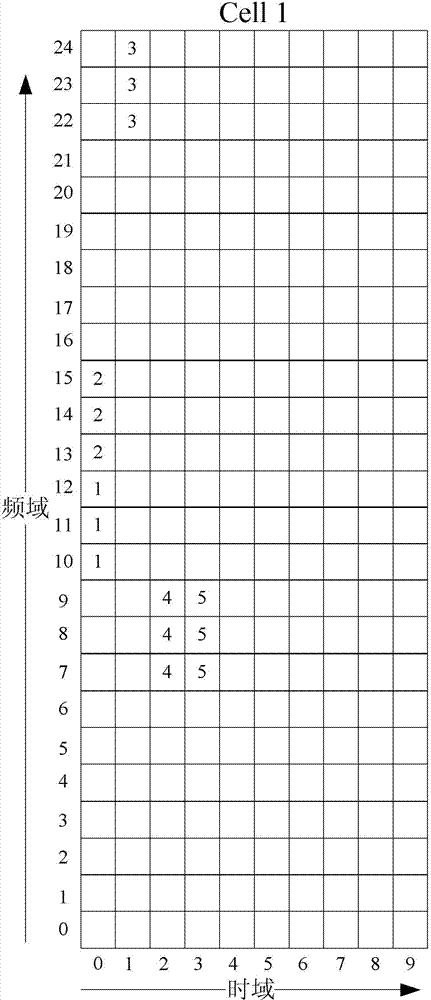Method and base station for interference coordination in LTE (Long Term Evolution) clustering communication system
A technology for trunking communication and interference coordination, applied in the field of communications, can solve problems such as the inability to coordinate the interference of trunking services, and achieve the effects of enhancing user perception, avoiding co-channel interference, and improving system performance
- Summary
- Abstract
- Description
- Claims
- Application Information
AI Technical Summary
Problems solved by technology
Method used
Image
Examples
application example 1
[0050] For each base station, the administrator can pre-configure the list of neighboring cells (that is, other cells except this cell) of the cell through the network management background, and the base station can use the first N neighboring cells in the list of neighboring cells as the time-frequency interference coordination of the cell It is also possible to use all the neighboring cells in the neighboring cell list as the neighboring cells for the time-frequency interference coordination of the cell, where N is a positive integer; the relevant parameters of the semi-persistent scheduling of the cell can also be pre-configured through the network management background and Period of time-frequency resource interaction.
[0051] A method for interference coordination in an LTE cluster communication system, applied to the interference coordination of a base station to each serving cell within its own service range, including:
[0052] Step 10: The base station records or upd...
application example 2
[0056] For each base station, the administrator can pre-configure the list of neighboring cells (that is, other cells except this cell) of the cell through the network management background, and the base station can use the first N neighboring cells in the list of neighboring cells as the time-frequency interference coordination of the cell It is also possible to use all the neighboring cells in the neighboring cell list as the neighboring cells for the time-frequency interference coordination of the cell, where N is a positive integer; the relevant parameters of the semi-persistent scheduling of the cell can also be pre-configured through the network management background and Period of time-frequency resource interaction.
[0057] A method for interference coordination in an LTE cluster communication system, applied to interference coordination for each cell between different base stations, for each base station, including:
[0058] Step 10: In each semi-persistent scheduling...
PUM
 Login to View More
Login to View More Abstract
Description
Claims
Application Information
 Login to View More
Login to View More - R&D
- Intellectual Property
- Life Sciences
- Materials
- Tech Scout
- Unparalleled Data Quality
- Higher Quality Content
- 60% Fewer Hallucinations
Browse by: Latest US Patents, China's latest patents, Technical Efficacy Thesaurus, Application Domain, Technology Topic, Popular Technical Reports.
© 2025 PatSnap. All rights reserved.Legal|Privacy policy|Modern Slavery Act Transparency Statement|Sitemap|About US| Contact US: help@patsnap.com



